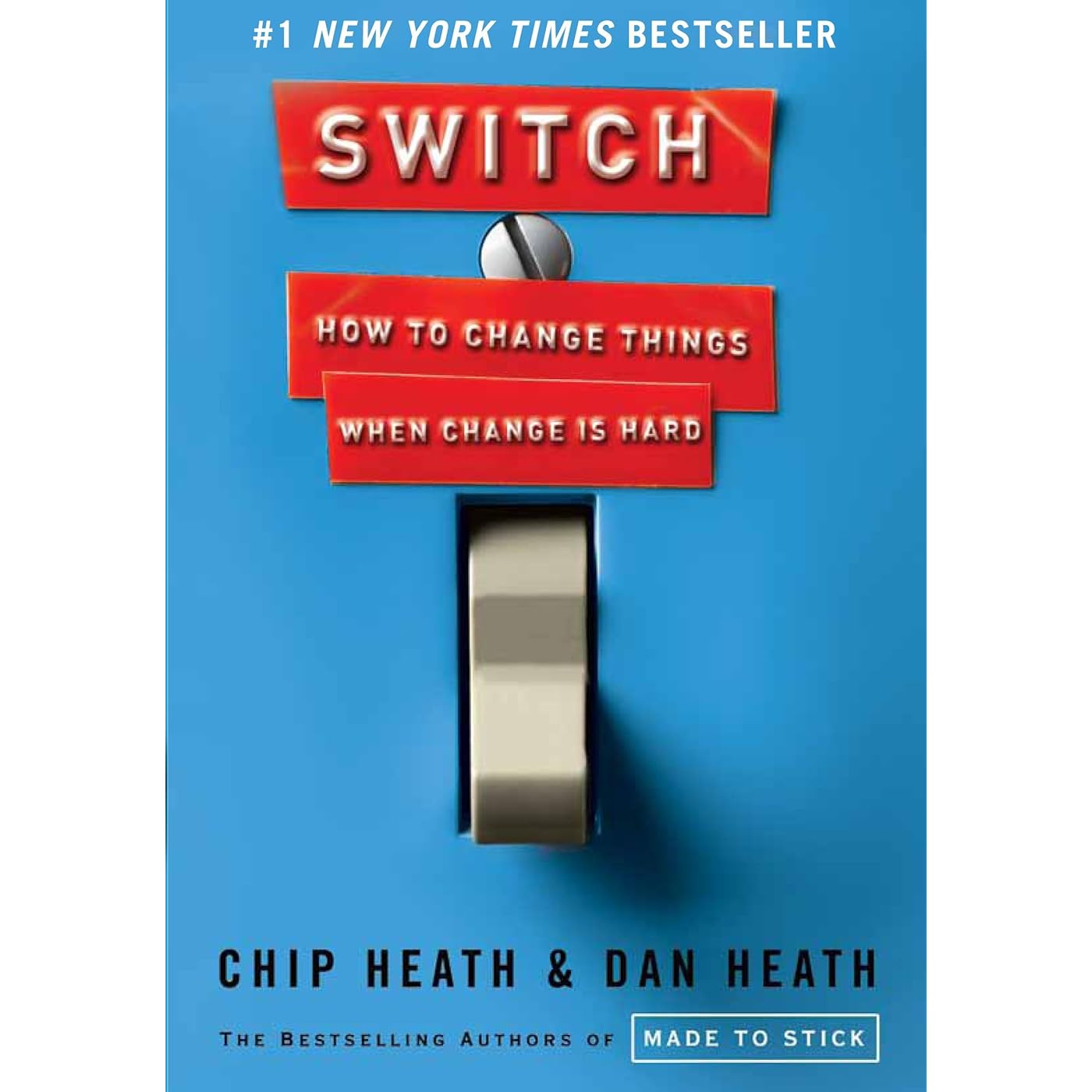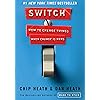


Ready to go? Add this product to your cart and select a plan during checkout. Payment plans are offered through our trusted finance partners Klarna, PayTomorrow, Affirm, Afterpay, Apple Pay, and PayPal. No-credit-needed leasing options through Acima may also be available at checkout.
Learn more about financing & leasing here.
30-day refund/replacement
To qualify for a full refund, items must be returned in their original, unused condition. If an item is returned in a used, damaged, or materially different state, you may be granted a partial refund.
To initiate a return, please visit our Returns Center.
View our full returns policy here.
Description
Why is it so hard to make lasting changes in our companies, in our communities, and in our own lives? The primary obstacle is a conflict that’s built into our brains, say Chip and Dan Heath, authors of the critically acclaimed bestseller Made to Stick. Psychologists have discovered that our minds are ruled by two different systems—the rational mind and the emotional mind—that compete for control. The rational mind wants a great beach body; the emotional mind wants that Oreo cookie. The rational mind wants to change something at work; the emotional mind loves the comfort of the existing routine. This tension can doom a change effort—but if it is overcome, change can come quickly. In Switch, the Heaths show how everyday people—employees and managers, parents and nurses—have united both minds and, as a result, achieved dramatic results: ● The lowly medical interns who managed to defeat an entrenched, decades-old medical practice that was endangering patients. ● The home-organizing guru who developed a simple technique for overcoming the dread of housekeeping. ● The manager who transformed a lackadaisical customer- support team into service zealots by removing a standard tool of customer service In a compelling, story-driven narrative, the Heaths bring together decades of counterintuitive research in psychology, sociology, and other fields to shed new light on how we can effect transformative change. Switch shows that successful changes follow a pattern, a pattern you can use to make the changes that matter to you, whether your interest is in changing the world or changing your waistline. Read more
Publisher : Crown Currency; 1st edition (February 16, 2010)
Language : English
Hardcover : 320 pages
ISBN-10 : 0385528752
ISBN-13 : 57
Item Weight : 2.31 pounds
Dimensions : 5.69 x 1.17 x 8.5 inches
Best Sellers Rank: #7,040 in Books (See Top 100 in Books) #16 in Business Decision Making #22 in Decision-Making & Problem Solving #136 in Leadership & Motivation
#16 in Business Decision Making:
#22 in Decision-Making & Problem Solving: